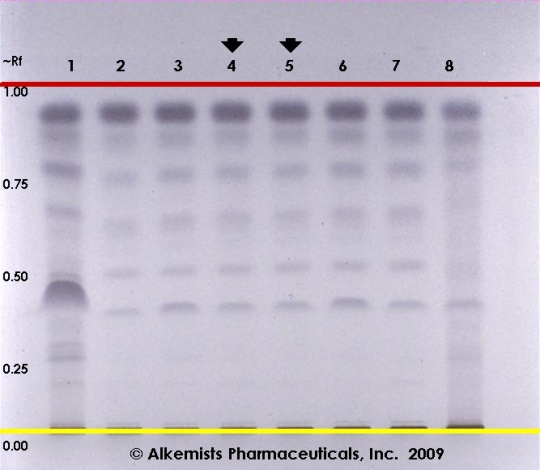Cucurbita pepo (seed)
m |
|||
| Line 14: | Line 14: | ||
=Botanical Voucher Specimen= | =Botanical Voucher Specimen= | ||
=Organoleptic Characteristics= | =Organoleptic Characteristics= | ||
| − | + | {| border=1 | |
| + | | | ||
| + | {{Macroscopy | source=United States Dispensatory (1918) | ||
| + | | description=''Cucurbita Pepo'' [...] slightly odorous when contused; taste bland | ||
| + | and oily. }} | ||
| + | |} | ||
=Macroscopic Characteristics= | =Macroscopic Characteristics= | ||
| + | {| border=1 | ||
| + | | | ||
{{Macroscopy | source=United States Dispensatory (1918) | {{Macroscopy | source=United States Dispensatory (1918) | ||
| description=''Cucurbita Pepo'', or common pumpkin, is a plant almost too well | | description=''Cucurbita Pepo'', or common pumpkin, is a plant almost too well | ||
| − | known to need description. | + | known to need description. The seeds are broadly elliptical or ovate, from 15 to 23 |
| − | The seeds are broadly elliptical or ovate, from 15 to 23 | + | |
mm. in length and from 2 to 3 mm. in thickness; externally yellowish-white, | mm. in length and from 2 to 3 mm. in thickness; externally yellowish-white, | ||
very smooth, occasionally with thin, transparent fragments of | very smooth, occasionally with thin, transparent fragments of | ||
| Line 26: | Line 32: | ||
outer layer and a membranous inner layer occasionally of a dark green | outer layer and a membranous inner layer occasionally of a dark green | ||
color; embryo whitish, straight, with a small conical hypocotyl and two | color; embryo whitish, straight, with a small conical hypocotyl and two | ||
| − | plano-convex cotyledons | + | plano-convex cotyledons...}} |
| − | + | |} | |
| + | =Microscopic Characteristics= | ||
| + | {| border=1 | ||
| + | | | ||
| + | {{Macroscopy | source=United States Dispensatory (1918) | ||
| + | | description=Under the microscope, sections of [''Cucurbita Pepo''] show an outer | ||
epidermal layer consisting of palisade-like cells, the radial walls | epidermal layer consisting of palisade-like cells, the radial walls | ||
attaining a length of 1 mm., the outer walls being usually torn off so | attaining a length of 1 mm., the outer walls being usually torn off so | ||
| Line 44: | Line 55: | ||
elongated or palisade-like cells containing a fixed oil and numerous | elongated or palisade-like cells containing a fixed oil and numerous | ||
small aleurone grains.}} | small aleurone grains.}} | ||
| − | + | |} | |
| − | + | ||
| − | + | ||
=High Performance Thin Layer Chromatographic Identification= | =High Performance Thin Layer Chromatographic Identification= | ||
{{HPTLC | source=Elan M. Sudberg, Alkemist Laboratories | {{HPTLC | source=Elan M. Sudberg, Alkemist Laboratories | ||
Revision as of 16:43, 17 March 2014
Contents |
Nomenclature
Cucurbita pepo L. Cucurbitaceae
Standardized common name (English): pumpkin
Botanical Voucher Specimen
Organoleptic Characteristics
|
Macroscopic Characteristics
|
Microscopic Characteristics
|
High Performance Thin Layer Chromatographic Identification
|
Pumpkin (seed) (Cucurbita pepo) Lane Assignments Lanes, from left to right (Track, Volume, Sample):
Reference materials used here have been authenticated by macroscopic, microscopic &/or TLC studies according to the reference source cited below held at Alkemists Laboratories, Costa Mesa, CA. Stationary Phase Silica gel 60, F254, 10 x 10 cm HPTLC plates Mobile Phase chloroform: ethanol [9.5/0.5] Sample Preparation Method 0.3 g + 3 ml CH3OH sonicated + heated @ 50° C ~ 1 hr. Detection Method Vanillin/H2SO4 Reagent -> 110° C 5 min -> visible light Reference see British Herbal Pharmacopoeia, 1996
|
Supplementary Information
Sources
- ↑ United States Dispensatory (1918)
- ↑ United States Dispensatory (1918)
- ↑ United States Dispensatory (1918)
- ↑ Elan M. Sudberg, Alkemist Laboratories http://www.alkemist.com

